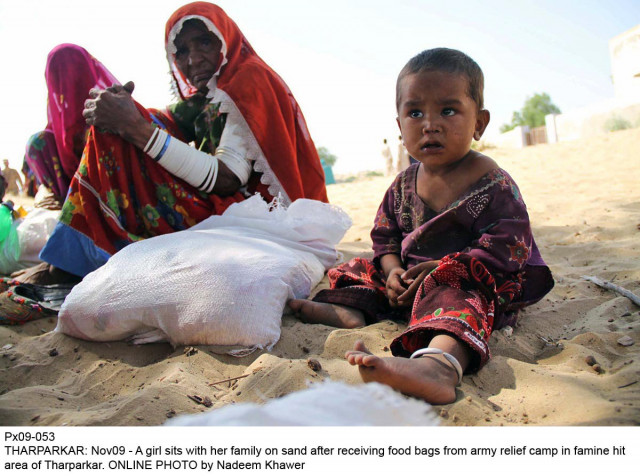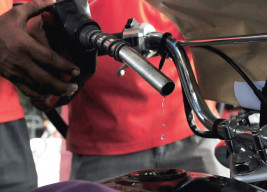
“The crisis in Tharparker threatening the lives of 1.4 million people is more a man-made disaster than a natural calamity,” said public policy analyst Ahmed Khawar Shahzad in a research paper for the University of Management and Technology.
In his MPhil paper published last month, Shahzad noted that poor governance, bureaucratic inefficiency, neglect and dearth of adequate health facilities had aggravated the crisis.
He recommended 12 steps - seven short-term and five long-terms steps - to avert such a crisis in the future.
The paper noted Tharparkar was one of the poorest districts of Sindh but the desert land was fertile. Shahzad wrote that the economy of Tharparkar could be referred to as a gamble on the monsoon. He said rain was essential for upkeep of livestock and maintaining a steady income from agriculture and handicrafts. As a short term measure, he recommended that six rehabilitation centres for neonates and lactating women should be set up to address the problem of malnutrition.
He said the bureaucracy should implement a 24/7 policy in areas where emergency had been declared.
He said wrote that even after the drought in Thar was declared an emergency, local authorities enjoyed two-and-a-half holidays on Friday, Saturday and Sunday.
He proposed introduction of committees of concerned district officials (CCDO) to monitor steps being taken by the government to address the crisis in Tharparkar.

He said the committees would be responsible for provision of health facilities, food and fodder. Shahzad said an accountability and rewards mechanism should be introduced. He wrote that inefficient and corrupt officials should be identified and dismissed.
He wrote that relief and rescue operations must be monitored by the chief secretary and the chief relief commissioner during an emergency.
He wrote that medical officers at health centres should be present at all times.
He wrote that a network of water supply lines and reservoirs were urgently required from Badin to Diplo, Umerkot to Chachro and Dahli and Mithi to Diplo.
In the long-term, he recommended reduction of Thar desertification, which, he wrote had ample scope for rehabilitation provided an irrigation canal like the Rajasthan Canal of India and Imperial Valley Canal of south California.
“A man-made disaster in Tharparkar desert can be transformed into a man-made oasis through the construction of Thar desert canal,” he wrote.
He said the hilly areas of Nagarparkar had plenty of granite.
He said better employment opportunities on the ground could open a new vista of economic prosperity in the district.
Shahzad wrote that plenty of rain water was lost in the desert without proper harvesting facilities.
“Proper harvesting of rainfall can bestow people with ample water to use for more than a year. For this purpose, low cost ponds (tarai) should be constructed in catchment areas. Groundwater is available in abundance but multi-pronged efforts are required for its extraction, purification, desalination and de-fluorination,” he wrote.
Published in The Express Tribune, January 17th, 2015.


















COMMENTS
Comments are moderated and generally will be posted if they are on-topic and not abusive.
For more information, please see our Comments FAQ